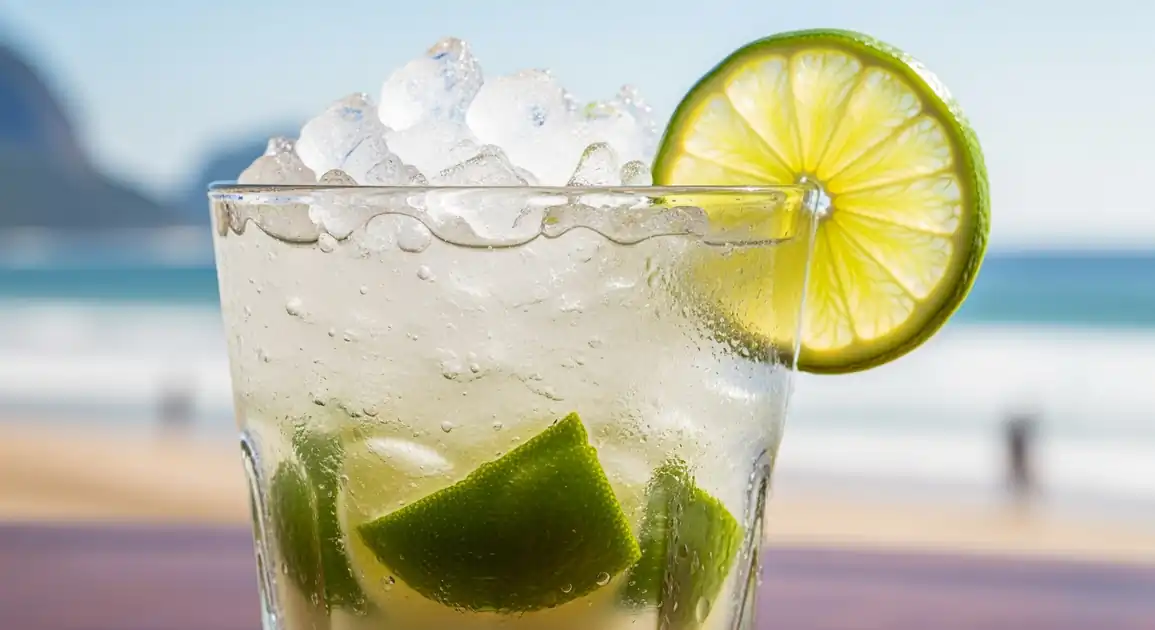Caipirinha
Caipirinha

Description
Rio de Janeiro is synonymous with the Caipirinha. Enjoying one at a beach kiosk on Copacabana or Ipanema, or in a lively bar in Lapa, is a quintessential Carioca experience. The city offers countless variations, especially fruit Caipirinhas, alongside expertly made traditional versions using a wide range of cachaças.
Dietary Information
Serving information
Serving style
Served in rocks glasses, often with gusto at beach kiosks. Fruit variations are particularly popular and colorful.
Quick facts
Beach Kiosks: Generally 9 AM - late evening/night. Lapa Bars: Evening until early morning (3-5 AM+). Restaurants/Other Bars: Typical lunch/dinner/late hours.
Safety Tips
What to Look For
-
Made with fresh, bright green limes
Ensures authentic flavor and quality. Avoid places using old limes or bottled juice.
-
Clean ice, preferably commercially made
Ice from unreliable sources can cause stomach issues. Look for clear, solid ice.
-
Prepared in a clean bar area with clean glassware
Basic hygiene reduces risk of contamination.
-
Bar/kiosk looks reputable and potentially busy
Popular spots often maintain better standards, but quiet quality bars exist too.
-
Balanced flavor upon tasting (not overwhelmingly sweet or sour)
Suggests proper preparation and potentially better quality ingredients.
What to avoid
-
Using bottled lime juice or old, browning limes
Drastically affects flavor and indicates poor quality.
-
Ice that looks cloudy, melts too quickly, or comes from an unknown source
Potential indicator of impure water.
-
Extremely cheap 'promotional' Caipirinhas
May use very low-quality cachaça, excessive sugar, or cut corners on hygiene.
-
Dirty bar surfaces, sticky glasses, or unhygienic handling by bartender
Increases risk of contamination.
-
Pre-mixed batches sitting in jugs
Freshly muddled Caipirinhas are vastly superior in taste and safer regarding ingredient freshness.
Price information
Price range
Budget tips
- Kiosks on the beach offer competitive prices (12-25 BRL), though can vary by location.
- Bars in Lapa offer a huge range, from cheap spots to pricier cocktail bars (15-35 BRL).
- Upscale bars in Zona Sul (Ipanema, Leblon) or Santa Teresa will be the most expensive (25-45+ BRL).
- Look for happy hour deals ('dose dupla') at some bars.
Value indicators
- Fresh ingredients, especially lime quality.
- Good balance of sweet, sour, and cachaça flavor.
- Made fresh to order by a skilled bartender.
- Served properly chilled with good ice.
- Atmosphere of the bar/kiosk adds to the experience.
Where to Find This Dish
Copacabana & Ipanema Beach Kiosks
Iconic location. Numerous kiosks line the boardwalk ('calçadão'), each offering Caipirinhas.
Avenida Atlântica (Copacabana), Avenida Vieira Souto (Ipanema)
Daytime, Sunset, Early Evening
Lapa
Rio's bohemian nightlife hub, famous for its numerous bars and street parties where Caipirinhas flow freely.
Arcos da Lapa (Lapa Arches), Rua do Lavradio, Rua Mem de Sá
Night (especially weekends)
Santa Teresa
Charming hillside neighborhood with bohemian bars offering scenic views and well-made Caipirinhas.
Largo dos Guimarães, Parque das Ruínas vicinity
Late Afternoon, Evening
Leblon & Ipanema Bars/Restaurants
More upscale bars and restaurants in these affluent neighborhoods often serve refined Caipirinhas, sometimes with premium cachaças.
Rua Dias Ferreira (Leblon), Rua Vinicius de Moraes (Ipanema)
Evening, Night
Vendor Tips
- Try a 'Caipifruta' with a local fruit like passion fruit ('maracujá') or cashew fruit ('caju').
- Ask for cachaça recommendations if you want to try something beyond the standard brands.
- Be aware of your surroundings when drinking in crowded areas like Lapa or on the beach at night.
- Compare prices between beach kiosks; they can vary slightly.
- Many kiosks specialize in certain fruit caipirinhas - look at their displays.
How to Order
Regional Variations
-
Prevalence of Fruit Caipirinhas
(Caipifrutas Populares)
Rio has a particularly strong culture of fruit Caipirinhas, with passion fruit, strawberry, and pineapple being extremely common.
-
Beach Kiosk Style
(Estilo Quiosque)
Caipirinhas from kiosks are often made quickly and robustly, sometimes with crushed ice and served very cold.
-
Artisanal Cachaça Bars
(Bares de Cachaça Artesanal)
Rio has several bars specializing in artisanal cachaças, offering opportunities to try Caipirinhas made with unique spirits.
Cultural context
History
The exact origins are debated, but one popular theory suggests it evolved from a folk remedy for the Spanish flu around 1918 in São Paulo, originally made with lime, garlic, honey, and cachaça. Over time, garlic and honey were dropped, sugar replaced honey, and ice was added to create the refreshing cocktail we know today. The name 'Caipirinha' is the diminutive of 'caipira', referring to someone from the countryside, essentially meaning 'little countryside drink'. It was officially recognized as Brazil's national cocktail and its recipe regulated by law.
Local significance
The ultimate Carioca drink, embodying Rio's relaxed beach culture, vibrant nightlife, and social spirit. It's more than a cocktail; it's a lifestyle element.
Eating customs
- Often enjoyed alongside 'petiscos' (Brazilian snacks/appetizers).
- Frequently consumed before, during, and after meals.